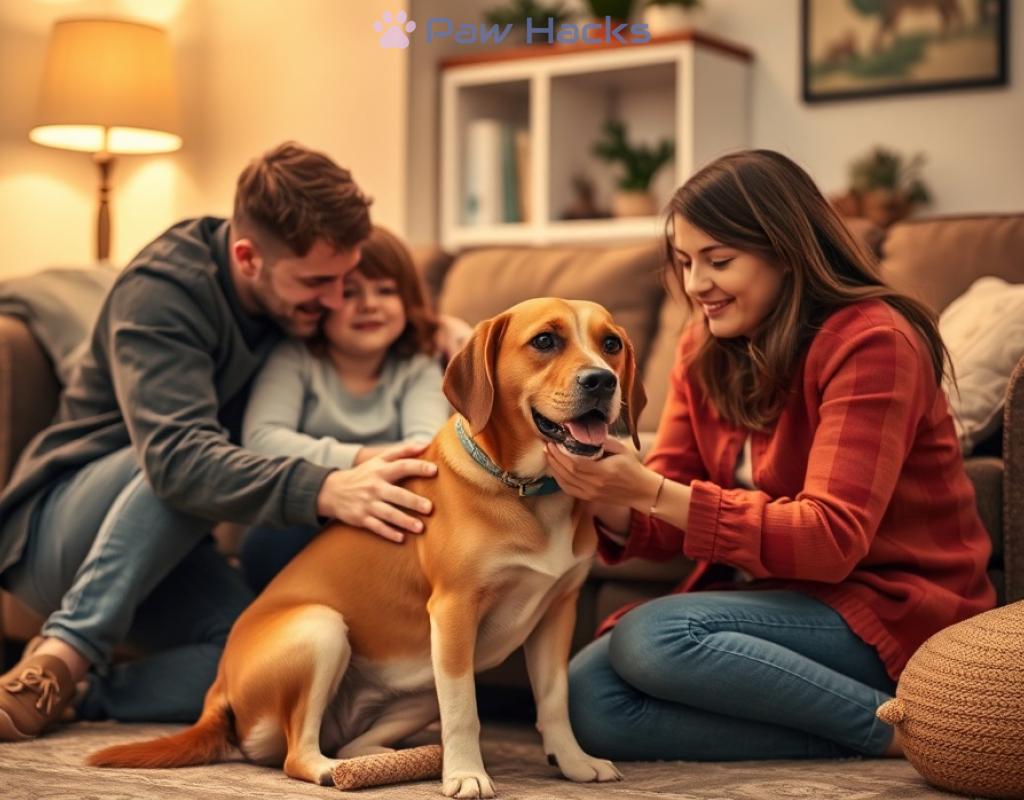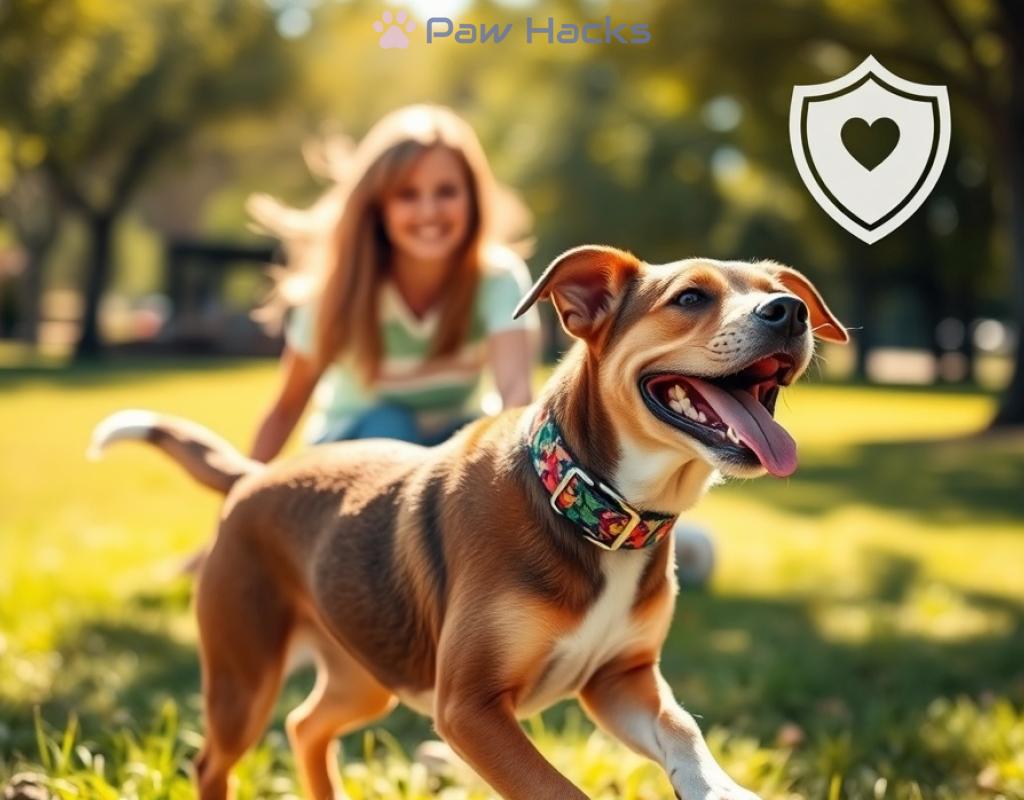Adopting Pets with Separation Anxiety
Understanding Separation Anxiety in Pets: Signs You Should Know

The Emotional Toll of Separation Anxiety
Separation anxiety is a common issue among pets, particularly dogs and cats. It occurs when they feel extreme distress when separated from their owners. This emotional turmoil can lead to various behavioral problems, making it crucial for pet owners to recognize the signs early on. The more you understand about your pet’s feelings, the better equipped you’ll be to help them cope with their anxiety.
Recognizing the Signs of Separation Anxiety
Identifying separation anxiety in pets is essential for their well-being. Pets often exhibit specific behaviors that signal their distress when left alone. By being observant, you can help your furry friends feel more secure and comfortable. Here are some common signs to look out for:
- Excessive barking or whining: Dogs may vocalize loudly when they are anxious.
- Destructive behavior: Chewing furniture or scratching doors are signs of distress.
- Pacing: An anxious pet may walk in circles or pace back and forth.
- House soiling: Some pets may urinate or defecate indoors when left alone.
- Clinginess: If your pet follows you everywhere, it might be a sign of anxiety.
The Impact on Your Pet’s Health
Separation anxiety can have serious implications for your pet’s health. Chronic stress can lead to a host of problems, including decreased appetite, digestive issues, and even depression. It’s vital to address these issues promptly to ensure your pet leads a happy and healthy life. Here’s a quick overview of the potential health impacts:
| Health Concern | Description |
|---|---|
| Weight Loss | Due to stress, pets may refuse to eat. |
| Digestive Problems | Stress can lead to vomiting or diarrhea. |
| Behavioral Issues | Increased aggression or fearfulness may develop. |
| Depression | Withdrawal from social interactions can occur. |
Creating a Safe Space: Tips for Easing Your New Pet’s Anxiety

When bringing home a pet that exhibits signs of separation anxiety, creating a nurturing environment is essential. A safe space can significantly influence how well your new companion adjusts to their new surroundings. It’s important to understand that a thoughtful setup can help alleviate their fears and provide comfort during times of solitude. Making your home a sanctuary for your pet not only supports their emotional needs but also fosters a deeper bond between you and your furry friend.
Designing the Comfort Zone
Start by identifying a dedicated area in your home where your pet can feel secure. This space should be quiet and away from high-traffic areas to reduce overwhelming stimuli. Incorporate familiar items such as their favorite blanket, toys, and even an article of your clothing that carries your scent. These personal touches can provide a sense of familiarity and comfort, making them feel more at ease. Remember, the goal is to create a cozy retreat where your pet can retreat when they feel anxious.
Establishing Routine and Predictability
Pets thrive on routine, and establishing a consistent daily schedule can help reduce anxiety levels. Feeding, walking, and playtime at the same times every day can create a sense of predictability that reassures your new pet. Additionally, incorporating short training sessions during your daily routine can enhance their confidence. Positive reinforcement techniques can motivate them and build trust in you as their owner. The more they understand what to expect, the less anxious they will feel, especially during times of separation.
Utilizing Calming Aids
In some cases, integrating calming aids can be beneficial for easing anxiety in pets. Consider using pheromone diffusers or calming sprays that mimic natural soothing scents. These products can create a more relaxing environment for your pet, helping to alleviate their stress. Moreover, investing in interactive toys can keep them engaged and distracted while you are away. The objective is to create a positive atmosphere where your pet feels safe, secure, and loved, significantly reducing their anxiety over time.
Training Techniques: Helping Your Pet Cope with Being Alone
When welcoming a new pet into your home, especially one that struggles with separation anxiety, implementing effective training techniques is essential. These strategies not only help your furry friend adjust to being alone but also strengthen the bond between you and your pet. By employing a combination of gradual desensitization, positive reinforcement, and structured routines, you can create a supportive environment that fosters independence and confidence.
Gradual Desensitization: Easing into Independence
One of the most effective methods for helping your pet cope with being alone is gradual desensitization. This technique involves slowly increasing the amount of time your pet spends alone to help them adjust to the experience without feeling overwhelmed. Start by leaving your pet in a safe space for short periods while you are still nearby. Gradually extend these periods, ensuring to return before they become anxious. This process allows your pet to develop a sense of security regarding your absences.
Positive Reinforcement: Building Confidence
Using positive reinforcement is crucial in training your pet to feel more comfortable when left alone. Reward your pet with treats, praise, or playtime for remaining calm during your departures. This approach not only encourages good behavior but also helps your pet associate your absences with positive experiences. Always remember to be patient and consistent; it may take time for your pet to learn that being alone is not a negative experience.
Establishing a Structured Routine: Predictability is Key
Creating a structured routine can significantly reduce anxiety for your pet. Animals thrive on predictability, so developing a consistent schedule for feeding, walks, and playtime can help them feel secure. By knowing what to expect throughout the day, your pet will be less anxious during the times you are away. Additionally, consider incorporating brief training sessions into your routine to enhance their skills and confidence. This practice not only enriches their day but also establishes you as a reliable and reassuring presence.
- Start small: Leave your pet alone for just a few minutes and gradually increase the duration.
- Use familiar scents: Place an item of your clothing in their safe space to provide comfort.
- Engage with toys: Provide interactive toys to keep your pet occupied while you’re away.
- Practice departures: Train your pet to remain calm by practicing leaving and returning home frequently.
By applying these training techniques, you can help your pet develop the resilience needed to handle their separation anxiety. Remember, patience and consistency are essential as your furry friend learns to navigate the challenges of being alone.
The Importance of Routine: Establishing Stability for Anxious Pets
When bringing a new pet into your home, especially one that shows signs of separation anxiety, establishing a daily routine can be a game-changer. A predictable schedule not only eases the stress of your new furry friend but also fosters a sense of security. By creating a framework of consistency, you can help your pet adapt more quickly to their new environment, ultimately enhancing their quality of life.
Creating Consistency in Daily Activities
Animals are creatures of habit, and they thrive when they know what to expect. By designating specific times for feeding, walking, and play, you can instill a sense of normalcy that can greatly reduce anxiety levels. Here are the key components to consider when establishing a routine:
- Feeding Times: Serve meals at the same time each day to create a rhythm that your pet can rely on.
- Exercise Schedule: Regular walks or play sessions at fixed times help your pet understand when to expect physical activity.
- Quiet Time: Designate times for relaxation or downtime. This helps your pet learn when it’s time to settle down.
Building Trust Through Predictability
Trust is crucial in the pet-owner relationship, especially for pets with separation anxiety. A structured routine not only helps your pet feel more secure but also reinforces your role as a reliable caregiver. When your pet knows that you will consistently be there for them, it alleviates fears of abandonment. To strengthen this bond, consider the following:
- Positive Reinforcement: Reward your pet for following the routine, making them more likely to remain calm during transitions.
- Gradual Adjustments: If you need to alter the routine, introduce changes slowly to avoid overwhelming your pet.
Incorporating Activities that Foster Independence
While routines are important, it’s equally essential to include activities that encourage your pet to feel comfortable being alone. By integrating independent playtime and training sessions into your daily schedule, you can help your pet build confidence in their ability to cope with solitude. Here are some effective strategies:
- Interactive Toys: Provide stimulating toys that keep them occupied during your absence.
- Short Departures: Leave your pet alone for brief periods and gradually increase the duration to help them acclimate.
By focusing on creating a consistent routine, you can significantly improve your anxious pet’s well-being, paving the way for a happier, more secure life together.
Finding the Right Support: Resources for Pet Owners Facing Separation Anxiety
Adopting a pet with separation anxiety can be a rewarding yet challenging experience. As a responsible pet owner, it’s crucial to seek out the right resources that can provide guidance and support. Whether you’re navigating behavioral issues or looking for ways to create a more comforting environment, understanding the available support systems can significantly improve both you and your pet’s quality of life.
Professional Guidance: Trainers and Behaviorists
One of the most effective ways to address separation anxiety is to consult with a professional trainer or animal behaviorist. These experts can offer tailored strategies to help your pet overcome their fears. They can assess your pet’s specific behaviors and create a customized training plan that includes techniques like positive reinforcement and desensitization. Moreover, they can provide ongoing support and adjustments to the training plan as your pet progresses. Investing in professional guidance not only equips you with practical tools but also reinforces your commitment to your pet’s emotional well-being.
Online Communities and Support Groups
In today’s digital age, connecting with fellow pet owners who understand the challenges of separation anxiety can be invaluable. Online forums and social media groups dedicated to pet care offer a wealth of shared experiences and advice. These platforms allow you to ask questions, share your concerns, and receive encouragement from others who are navigating similar situations. Engaging with these communities can help you feel less isolated and more empowered as a pet owner. Through sharing stories and tips, you can discover new strategies and find solace in knowing that others are on a similar journey.
Educational Resources: Books and Online Courses
Another excellent way to equip yourself with knowledge is by exploring educational resources focused on pet training and behavior. Many authors and trainers have published books specifically addressing separation anxiety in pets. These texts often provide insights into understanding your pet’s behavior and practical training exercises to implement at home. Additionally, consider enrolling in online courses that delve into behavioral training and anxiety management. By expanding your knowledge through these resources, you can become a more confident and effective pet owner.
Share this content:



